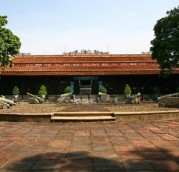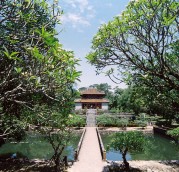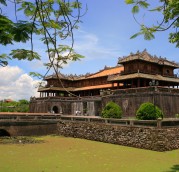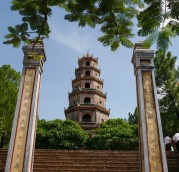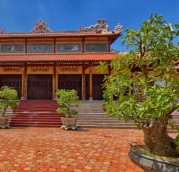Hue is a city of rich culture, long history, special gastronomy, unique architecture and art.
There are about nearly 70 traditional handicraft villages in Hue with skilled and master craftsmen, such as conical hat, votive paper items, incense making villages, bronze-casting, embroidery, mat-weaving and etc.
Conical hat
An image of young women with “non la” (conical hats) and “ao dai” (Vietnamese gown) is a symbol of Vietnam in general and Hue in particular. Conical hat making has been a traditional trade in Hue for hundreds of years, with many craft villages like Da Le, Phu Cam, Doc So, Trieu Tay, Kim Long, Sia... The most famous among them is Phu Cam village, located in the heart of Hue city, southern part of An Cuu River.
To make the conical hats more special, craftsmen add paintings of Hue and poems between the two layers of leaves, creating “non bai tho” (poetic conical hats). Conical hats have become indispensable gifts from Hue.

Sinh village’s paintings
Tet (Lunar New Year) festival paintings of the Sinh village are a combination of traditional culture and ancient artistic methods and have been part of the of the Hue ethnic minority culture for over four centuries.
Nowadays, more than 30 families in Sinh village are working feverishly making last minute preparations for the fair.
They are making printing paper from the bark of a tree called ‘dzo’. The background paper is originally white. Colors are made from natural materials. For example, the red colour is taken from earth of hills and mountains, the black colour is from coal of burned bamboo leaves and white colour is made from sea shells. The painting is then covered with a layer of sticky rice paste (called ‘ho nep’) to protect, which results in an amazingly long lasting sturdy finish.


“Phap lam” art (anamel bronze painting)
Phap lam art, a kind of enamel painting and carving on copper, debuted in Hue City in 1827 but had disappeared by 1842 – until now that is.
An engineer in Hue has brought the art back to life. It took engineer Do Huu Triet nearly 10 years to figure out how to restore the ancient art of phap lam, a form that uses ceramic enamel to cover laminated copper, in the central city of Hue.
Triet has opened a gallery and workshop in his home in an alley off Ba Trieu Street, where 20 artists produce around 300 pieces of art a year.
The art, which emerged in the city in 1827 under the reign of King Minh Mang, thrived during the 19th century before falling into oblivion in late 1842. The 98 remaining ancient products of phap lam enamel from the previous century are displayed in the Fine Arts Museum of Hue; the others sit on the roofs of buildings in the Inner City.

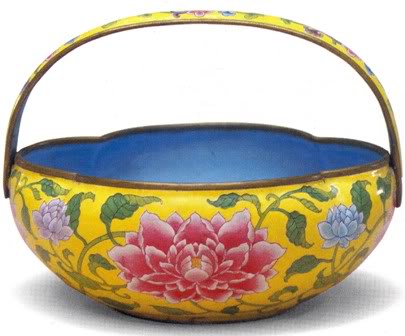
Thanh Tien paper flowers village
In the tiny village of Thanh Tien on the outskirts of Hue City, a tradition of paper flowers craftsmanship has been handed down from one generation to another for more than 300 years. The village is particularly famous for its lotus flowers, which come in all the colours of the rainbow.
They are used for decorating solemn places and traditionally replaced annually during the Lunar New Year festival (Tet). It has become a special cultural identity of Hue people.


|







